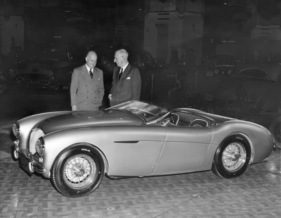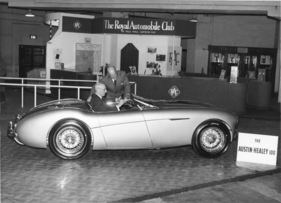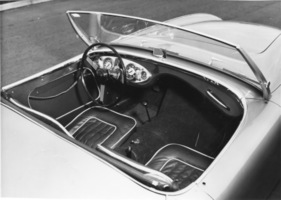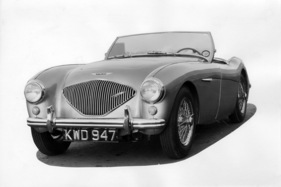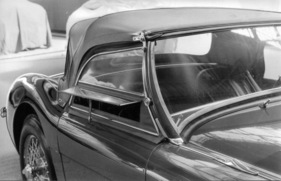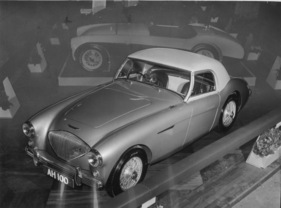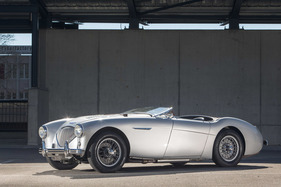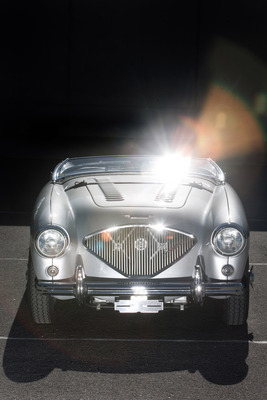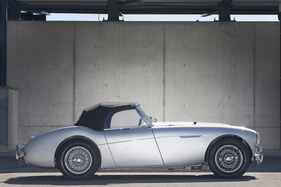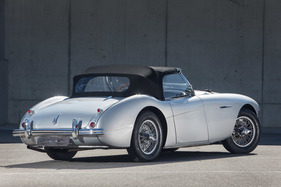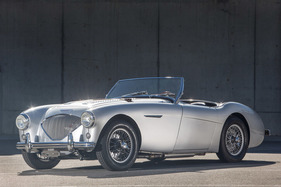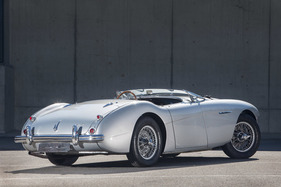Austin-Healey 100M - Le Mans equipment for the sports driver
Summary
When the Austin-Healey 100 was shown for the first time at the Earls Court Motor Show in London in October 1952, it aroused enormous interest. With speed records and racing successes, it proved its sportiness, while at the same time being inexpensive. And anyone who wanted to be a little faster could get help from the factory. This is how the 100 M was created to Le Mans specification. This report summarizes the history of the four-cylinder Austin-Healey and shows a factory 100M in many pictures.
This article contains the following chapters
- The most affordable 100-mile sports car
- Records for the debut
- Also inexpensive in this country
- Le Mans success and tuning kit
- Standard version in the BN2
- Replacement by the six-cylinder
- Sold primarily in the USA
- Further information
Estimated reading time: 8min
Preview (beginning of the article)
When the Austin-Healey 100 was first shown at the Earls Court Motor Show in London in October 1952, it aroused enormous interest. The press reported extensively on the appearance of the new sports car. Automobil Revue wrote at the time: "With the new sports type, which only received its combined name during the first days of the London exhibition and of which only a few prototypes exist at the moment, England has a new high-performance vehicle whose low price of 850 pounds (excluding VAT) has caused surprise. This was mainly due to the simple basic design and the use of unchanged Austin series parts such as the A90 engine and gearbox, steering and front suspension. The chassis, consisting of welded longitudinal beams and reinforced with a cross brace, is particularly torsionally rigid thanks to an associated torpedo .
Continue reading this article for free?
Photos of this article



















































